Protest sculptor: in New York, farewell to Ernst Unknown
The sculptor's closest friends came to say goodbye to the sculptor Ernst Neizvestny in the memorial hall at the Frank Campbell funeral home in Manhattan. No official speeches - Ernst Neizvestny himself asked for this.
The words of condolence were received by the native sculptor. Spouse Anna Graham refrained from communicating with journalists. Olga's daughter, Unknown, who came from Moscow, barely restrained her tears.
“I don't give interviews. After my dad’s death, I have the feeling that he is helping me get through this pain. But this is natural,” said Olga.
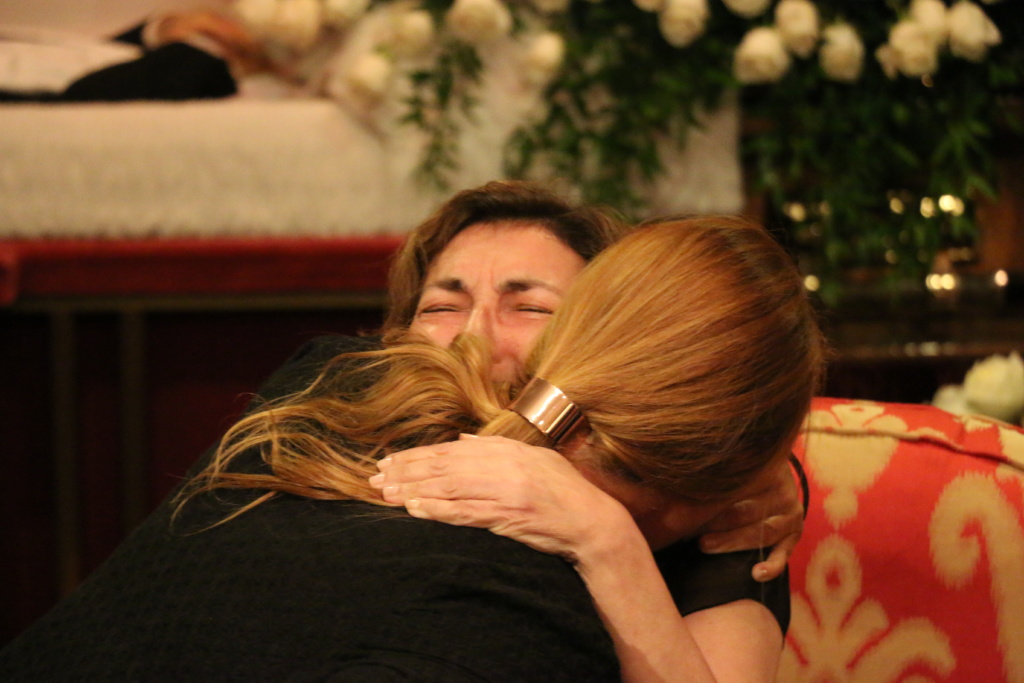
The wife of Ernst Unknown accepts condolences. Photo by Denis Malinin
News about the death of the Unknown came 9 August. The sculptor died in the hospital, where his wife brought him. They lived in a country house on Shetler Island, in the state of New York. Recently, he could not sculpt. However, the sculptor did not stop drawing.
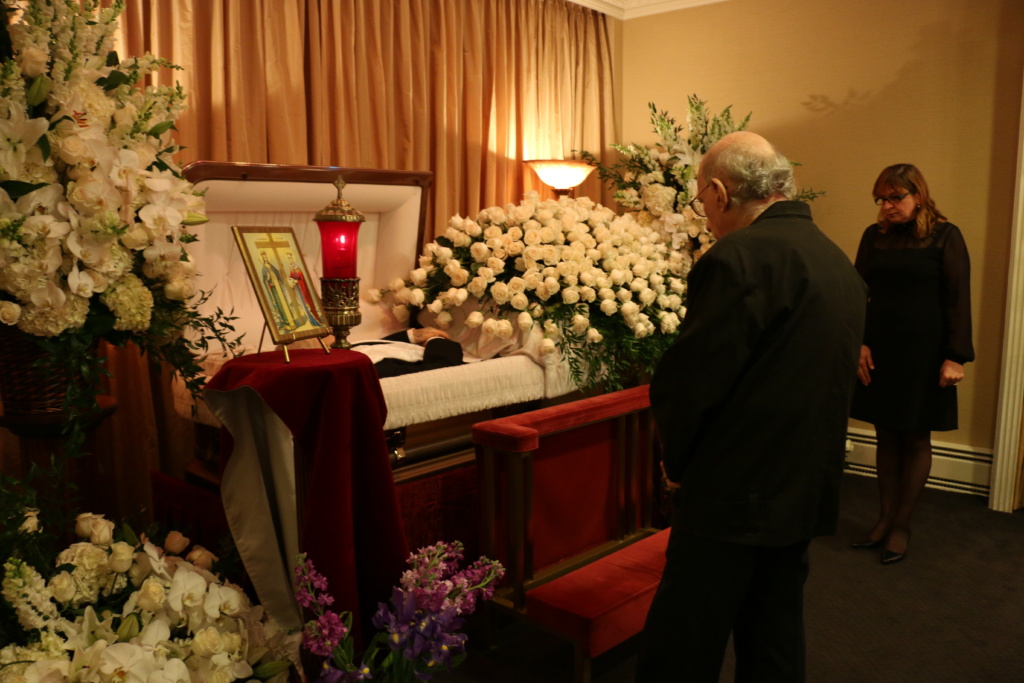
His colleagues and close friends came to bid farewell to Ernst Neizvestny. Photo by Denis Malinin
In November 2014, the Ernst Unknown received the “Person of the Year in Russian-Speaking America” award for his contribution to the profession. In 2015, the editors of ForumDaily planned to record an interview with the sculptor, but the artist’s wife reported that Ernst Neizvestny was feeling unwell, and the meeting had to be postponed.
The popularity of Ernst to the Unknown was brought not only by outstanding sculptures, but also by graphic cycles: illustrations for Dante's “Hell”, the works of Dostoevsky and Beckett. A close friend of the sculptor is journalist Oleg Sulkin, who knew him 20 for years, says that Unknown always worked. A couple of months ago, he showed him new drawings.
“I was influenced by his philosophical mindset. The fact that he knew how to analyze life, art, politics - subject everything to mental and intense analysis. This shocked me about him. We could talk for 3-4 hours,” recalls Sulkin.
Ernst Iosifovich's health was shaken after the discovery of a brain tumor, says Oleg Sulkin. Unknown had a neurosurgical operation, as a result of which the sculptor went blind in his right eye. Then the doctors gave disappointing forecasts, but the sculptor survived.
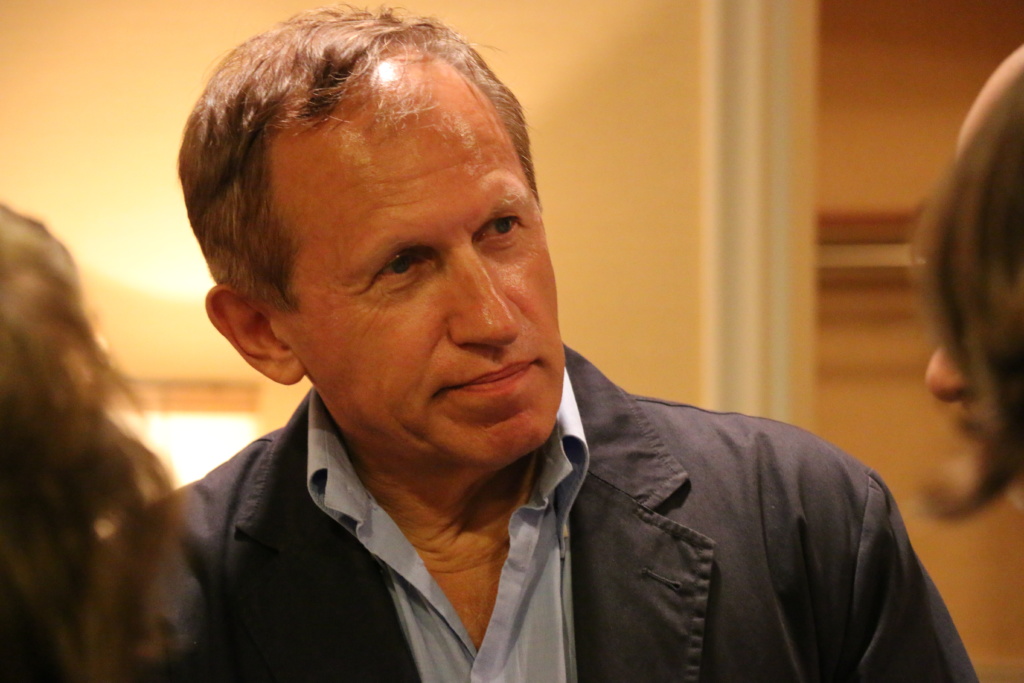
Journalist Oleg Sulkin was one of the first to attend the farewell ceremony. Photo by Denis Malinin
“He had a very strong body, so Siberian. He also looked like a bull: short, stocky. A very strong man. And in his youth he was very handsome - menacingly handsome. Often in his early photographs he looks warlike - he had to fight a lot for himself and for fate,” says Sulkin.
Unknown is used to fighting for his life and creativity. The sculptor was born in Sverdlovsk, and volunteered for the front during the war. And two weeks before the victory, Ernst was seriously wounded in Austria. The parents received a funeral and the Order of the Red Star posthumously. We hurried - he survived.
After his second birth, 10 years later, Neizvestny is already a member of the Union of Artists. But 1962 came. It was then at the famous exhibition in Manege head of the Soviet Union Nikita Khrushchev called Neizvestny’s art “degenerate.” The Soviet leader did not like that the artist was “distorting the faces of Soviet people.” The unknown person did not remain silent and responded harshly to Khrushchev, declaring that he was not afraid of threats. This courageous act could not help but be remembered by the sculptor’s friends who came to the farewell ceremony. Among them is the writer Alexander Genis. He calls the unknown “Renaissance artist”, in whom the greatness of Michelangelo’s level was felt.
“Such a person needs state power to carry out all his ideas. But this did not happen in Russia, and he remained generally unclaimed, although he did a lot. The Russian government has never been able to value its most worthy sons,” says Genis.
As the sculptor’s friends recall, Khizchev’s unkind didn’t hold his back, and even after the death of the first secretary, he created a monument on his grave.
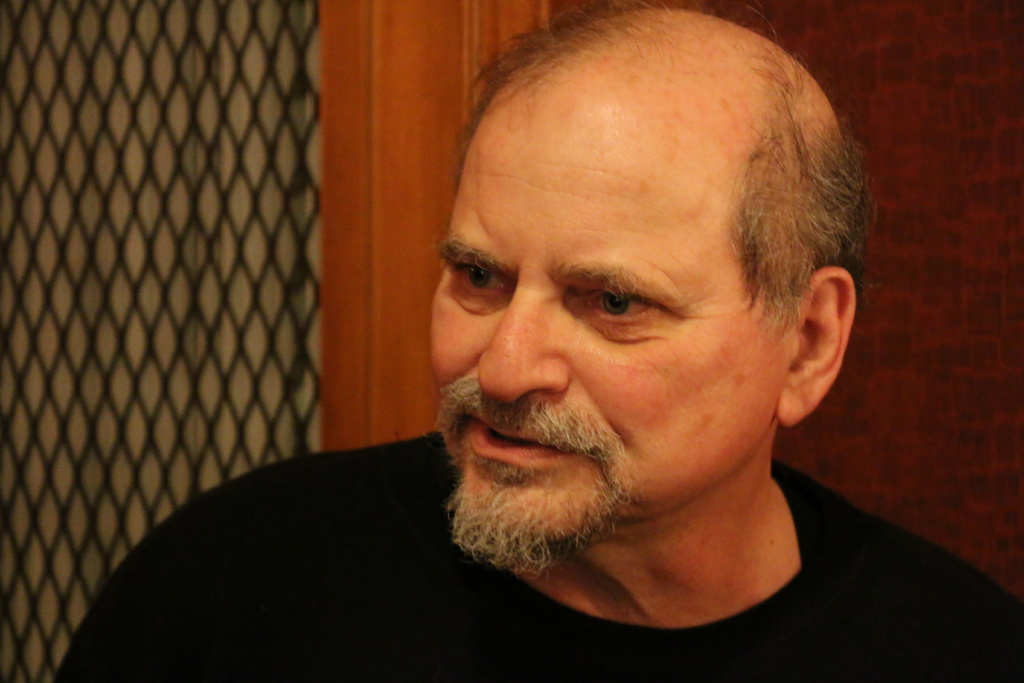
Writer Alexander Genis at the farewell ceremony. Photo by Denis Malinin
“The unknown person was a very lively person. He gladly told me about his younger years. About how he committed all sorts of outrages. But I won’t say which ones,” said writer Alexander Genis, smiling.
The persecution of the Unknown continued. Several criminal cases were opened against him, accusing the sculptor of currency fraud and espionage. To save himself, he was forced to leave the Soviet Union and emigrate first to Switzerland, and in 1977 to the USA. Writer Solomon Volkov says that Neizvestny himself did not like to call himself a dissident. After all, the sculptor and the authorities had not political, but aesthetic disagreements.
“He automatically became anti-Soviet. Both Soviet and post-Soviet authorities treated him equally. It is impossible to say that the Soviet government hated and destroyed him. He had orders. They threatened to send him to hard labor. But they wouldn't do it. Post-Soviet Russia paid tribute to him, but not a little more than was done in the Soviet Union. He never became a state sculptor,” says Volkov.
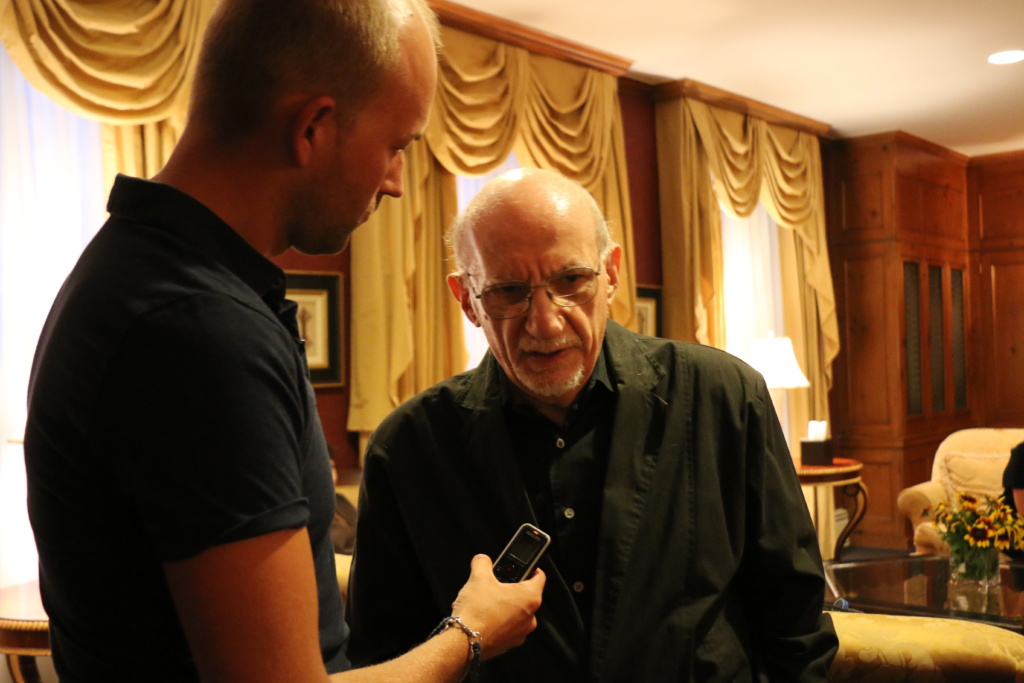
Writer Solomon Volkov gives interviews. Photo by Denis Malinin
In the West, the work of the sculptor was recognized and loved. In America, he continued to not only create, but also to train local students. Unknown lectured on art and philosophy at several US universities. In the States there are about a hundred sculptures of the Unknown. According to Alexander Genis, despite the difficult fate, the sculptor loved life. In recent years, he worked in the house, around which are his own work.
“He built his house the way he wanted. His island home was featured in architectural magazines. He knew how to do projects that required tower cranes. But he also knew how to make sculptural works for jewelers. The main thing for an artist is the recognition of the stroke. Even his signature. You will immediately recognize the Unknown,” says Genis.
Together with his wife, the artist often visited Russia. His famous memorial “Mask of Sorrow” appeared in Magadan - in memory of the victims of political repression. In 2003, the monument “In Memory of the Kuzbass Miners” was erected in Kemerovo. In Moscow, Neizvestny also left his mark - there you can see his works “Renaissance” and “Tree of Life”.
Neizvestny's works express protest - this is a confrontation between art and dictatorship. There is tragedy, pain, and struggle. Therefore, his compositions are often composed of parts of the human body. Neizvestny created his sculptures in bronze, but his monumental works were made of concrete.
Writer Solomon Volkov recalls the years when Unknown worked in his workshop in Soho, Manhattan. Hours of talk about life, discussion of news, philosophical conversations. Unknown has never had anger.
“He could speak with some mockery about this or that person, but there was never any personal malice in it. For me, he remains the largest representative of the “sixties” and one of its leaders,” Volkov added.
The farewell ceremony itself with the great sculptor was more like an evening in memory of Ernst Neizvestny. His relatives decided that everyone who wishes could say goodbye to the Unknown. For all those who did not have time to do it on the eve, the doors of the funeral home of Frank Campbell will be open on Thursday, from 14 to 16 hours and from 19 to 21 hours. A memorial service is scheduled for Saturday at St. Nicholas Cathedral in New York.
See also:
In New York, sculptor Ernst Unknown died.
In Miami, died one of the leading architects of the world Zaha Hadid
The iconic American pop musician Prince has passed away.
Go to the page ForumDaily on Facebook to keep abreast of the latest news and comment material. Also follow the social network for events in your city - Miami, New York и San Francisco Bay Area.











